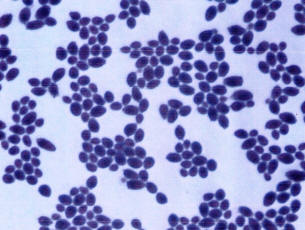 A yeast infection is a common
fungal infection caused by a group of 60-70 microscopic yeasts (a type of
fungi). Of
which the most common is
Candida albicans, which lives in the bowel but can easily be transferred from the anus to thevagina;
A yeast infection is a common
fungal infection caused by a group of 60-70 microscopic yeasts (a type of
fungi). Of
which the most common is
Candida albicans, which lives in the bowel but can easily be transferred from the anus to thevagina;
Candida albicans resides in various moist parts of ourbodies. Where it is normally controlled by native bacteria and by the bodys immune system
Small amounts of problem-free yeast are often carried on skin and mucous membranes. E.g.mouth, throat, gut, vagina (found in 25% of women usually without symptoms), near the anus, and in warm, damp skin folds.
Yeast can infect many parts of the body. Causes localized effects, such as oral or vaginal thrush, or or it can develop and have even more serious systemic effects:
A Vaginal yeast infection may cause the following symptoms:
Something triggers the multiplication and overgrowth of fungi/yeast living in the vagina - upsetting the balance between the "friendly"bacteria (Probiotics) and the fungi :
- Antibiotics -can kill beneficial bacteria that control yeast populations.
- Certain factors can weaken the immune system -which otherwise would keep yeast in check:
- Major Illness - E.g. diabetes, AIDS or cancer
- Drugs - E.g. steroids, immunosupressive drugs
- "Happy Hotel"for fungi diet - E.g. high-sugar diet, malnutrition